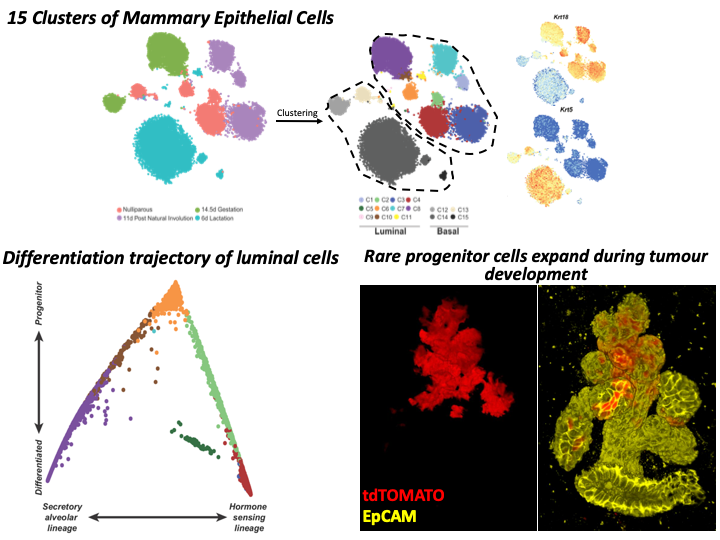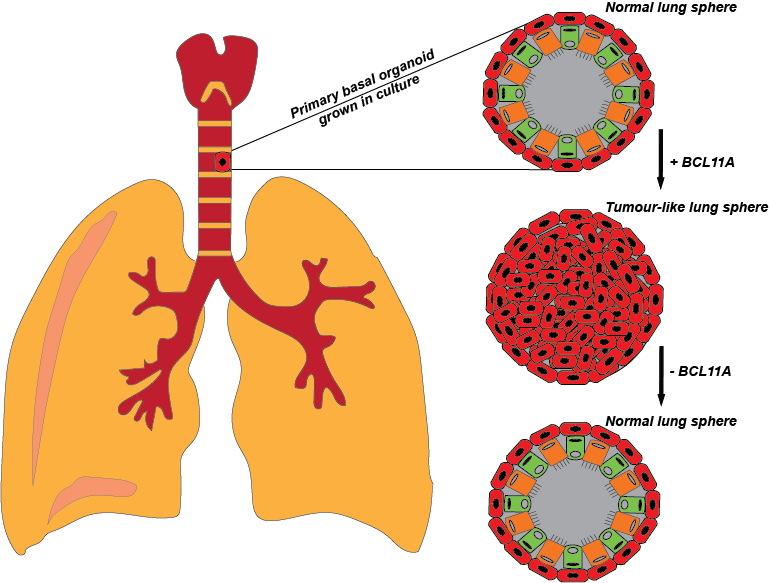Understanding the biology of triple negative breast cancer (TNBC)
Breast cancer is the most common type of cancer in the UK with an estimated 4000 new cases diagnosed every month. However, the heterogeneous nature of the disease means that an effective “one size fits all” treatment remains elusive. Thus, understanding the cellular and molecular basis of breast tumour heterogeneity is essential for the development of more effective treatments. Our research focuses on deconstructing the molecular basis of breast cancer heterogeneity and the identification of mammary epithelial cell fate regulators that drive tumour heterogeneity with the ultimate aim of developing targeted therapeutics for breast cancer. To achieve this we utilise GEMM, Crispr Screens, proteomics and genomic approaches to study triple negative breast cancer (TNBC). TNBC is an aggressive form of breast cancer, which accounts for 15-20% of all the breast cancer cases. At present there are limited therapeutic targets for TNBC. We are particularly interested in understanding the biology of BCL11A, which we recently identified as TNBC oncogene and exploiting this knowledge to develop new therapeutics.
Understanding the role of BCL11A in lung squamous carcinoma
Lung cancer accounts for the highest rate of cancer related diagnosis and mortality worldwide. Broadly, there are two major types of lung cancer; small cell lung cancer (SCLC) accounting for 15% of the cases and non-small cell lung cancer (NSCLC) accounting for 85% of cases. NSCLC patients have a poor outcome in the clinic with only 15% of patients surviving five-year or more. At present NSCLC is defined histo-pathologically in the clinic into four broad categories lung adenocarcinoma (LUAD), lung squamous cell carcinoma (LUSC), large cell carcinoma and undifferentiated non-small cell lung cancer. LUAD and LUSC are the most common types of NSCLC (90% of cases). LUSC accounts for more than 400,000 deaths worldwide each year and unlike LUAD there are limited targeted therapies available for LUSC. In our lab we are interested in the characterisation of BCL11A’s role in LUSC and how that can be exploited therapeutically.
Naked mole-rat cancer resistance (in collaboration with Ewan Smith and Kosuke Yusa)
Naked mole-rats (NMR) are highly unusual mammals: eucosial, cold-blooded and with a remarkable resistance to hypercapnia and hypoxia. A further characteristic that sets NMR apart from many other mammals is their exceptional longevity: the maximum life span is 30 years, over 5 times longer than what would be predicted from body mass – mice are of a similar size and yet rarely live longer than 3.5 years. One likely factor underlying the extreme longevity of NMR is their resistance to cancer. In a retrospective pathology study of 138 NMR from a zoo population over a period of 15 years no malignant neoplasms were ever observed. This is a remarkable observation given the longevity of the NMR in comparison to other mammals. In humans, approximately one in three will develop cancer at some point in their lives, with numbers expected to rise as we are living longer. There have been only a handful of studies investigating the reasons behind the resistance of the NMR to cancer. Most recently it has been shown that NMR cells secrete a high molecular weight hyaluronan, which when removed renders NMR fibroblasts susceptible to transformation.




